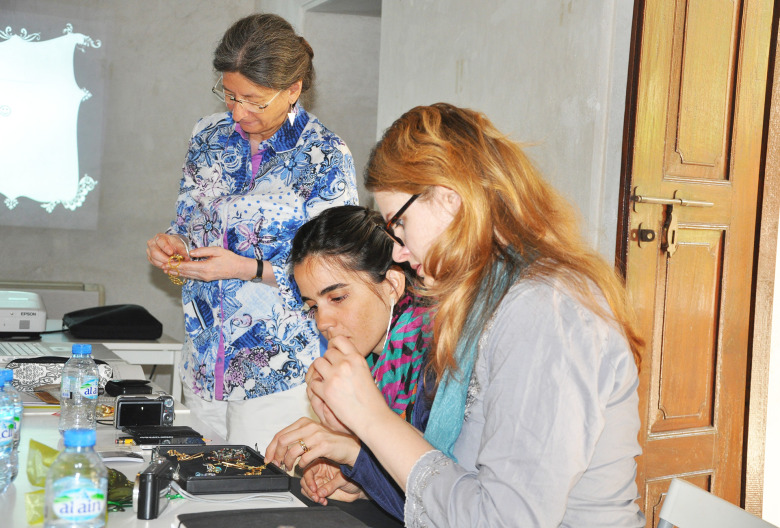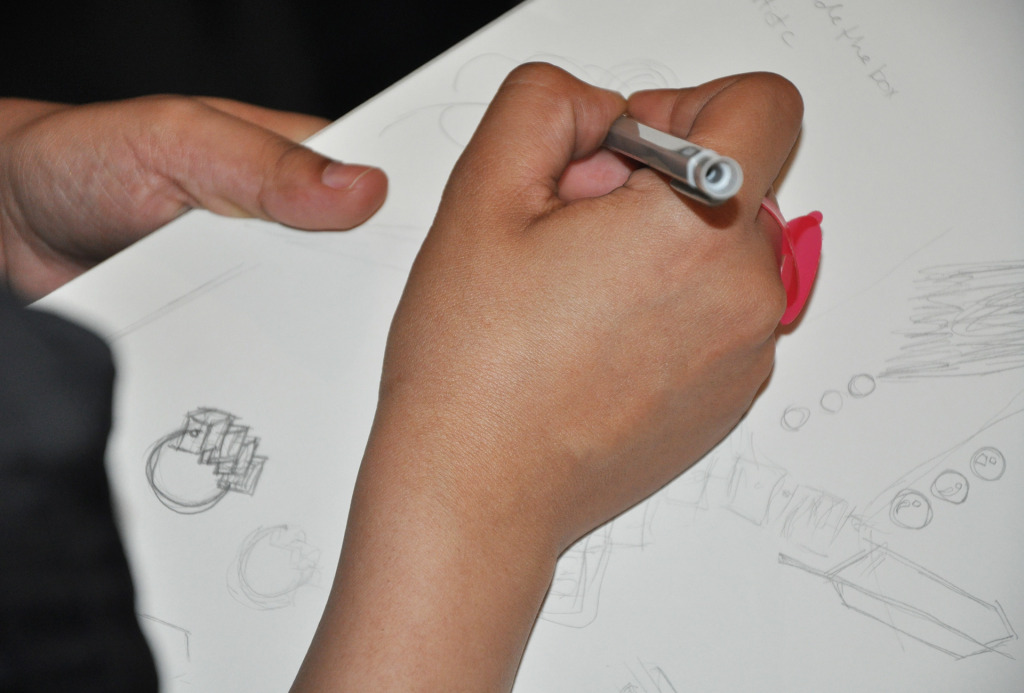
The atmosphere in Martina Dempf’s atelier in Berlin Kreuzberg is relaxed and cordial. Nine women from Dubai City and Berlin are sitting around a big table, enjoying coffee and pastries while talking about art, design and women’s roles – the themes of this year’s Berlin-Dubai Festival.
In 2010, the Goethe Institute Gulf Region launched the Berlin-Dubai Festival with the aim of promoting a creative dialog between the two metropolises. Since back then, it has organized a cultural exchange program for a small group of artists from various genres every year. In the past few years, the festival’s focus was on fashion, now it’s on jewelry. Jewelry is a cultural statement – global places, local signs is the motto of this year’s workshop, run by Theresa Lunardo-Monteiro of the Goethe Institute and the jewelry artist Martina Dempf. The participating jewelry designers are Amal Haliq, Noura Alserkal, Muna Alhaddad and Fatima Al Qassimi from Dubai, as well as Mirjam Hiller, Silke Spitzer, Rahel Fiebelkorn and Catalina Brenes from Germany.
The gathering could hardly be more exciting for the participants. After all, it gives them the opportunity to dispel cultural prejudices and to contemplate the situation in their own countries with a certain detachment. From September 29 through October 1, the Berlin artists were guests in the biggest city of the United Arab Emirates. Catalina Brenes tells us in a nutshell what they experienced there: “We had the opportunity to get to know real life in Dubai, which involves much more than the image communicated by the media. We met strong, proud women who cordially welcomed us and treated us like family.”
The concept of emancipation has a different meaning in Dubai. The four Arabian women in Martina Dempf’s atelier are successful businesswomen who have already established their own jewelry brands and are selling their creations on the international market. They talk passionately about their sales strategies and business goals with a kind of self-assurance that seems natural to them. Which is not surprising, because they all completed their vocational training at a business school. Fatima Al Qassimi proudly tells us that she is the first woman in her region to have opened a small workshop. And when it comes to design standards, these designers are also trailblazers, creating new settings for classic Arabian motifs, such as the falcon, in their modern modifications and interpretations of traditional jewelry.
Here in Germany, they say, people are focused very much on their work, maybe too much, and sometimes find it difficult to lighten up. The Berlin participants don’t object to the Dubai designers’ impression. Mirjam Hiller says that money is an unpleasant issue for many German jewelry artists. Their emphasis is much more on their art. It is precisely this artistic ambition that the Dubai participants are enamored with, and they take some of this inspiration, such as, for example, the courage to experiment with highly disparate materials, home with them.
Then the German participants show how their trip to Dubai is reflected in their work. One necklace, for example, suggests the opulence of Oriental necklaces, and another creation, crafted from silver, displays distinctly Oriental architectural characteristics. But many pieces haven’t been finished yet or still need to be created. On October 22, the Arab designers traveled back to Dubai, where they will incorporate their impressions in their jewelry.
The finished creations will be presented by the participants at the Dubai Festival’s jewelry show. You’ll be able to admire the pieces in our next ART AUREA issue.
Text Annika Reith
Photos Harald Müller Dempf and Theresa Lunardon-Monteiro
English translation Sabine Goodman




- —
-
A4 Space
Alserkal Avenue
Dubai, UAE - Link


